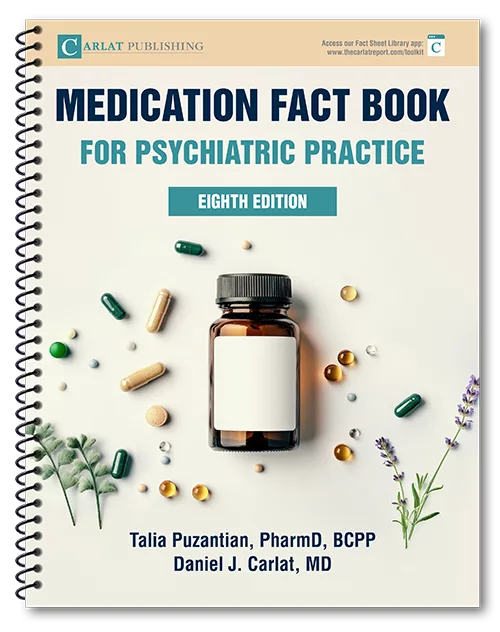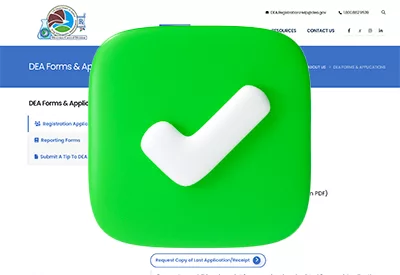Home » Psychostimulants and ADHD
Psychostimulants and ADHD
September 1, 2006
From The Carlat Psychiatry Report
Since our last issue on ADHD in April of 2005, three new psychostimulant formulations have been approved (Daytrana, the Ritalin patch, and Focalin XR), and one older medication received a new indication (Adderall XR is now indicated for adult ADHD).
The bigger news over the past year, however, was two safety warnings added to the product labeling of ADHD meds – a sudden cardiac death warning for stimulants and a suicidal ideation warning for Strattera.
In February of 2006, an FDA Advisory Committee voted 8 to7 to recommend that all stimulant makers add a warning (but not a black box) about the cardiovascular risks of these drugs. The action was based on data from the Adverse Event Reporting System used by the FDA to do its post-marketing safety studies of drugs. That decision was based on 25 cases of sudden death, mostly in children who had used either methylphenidate or amphetamine preparations.
This decision got plenty of flak from academic psychiatry (see, for example, J Clin Psychopharm. 2006;26(3):223-224, and Am J Psychiatry. 2006;163(4):574-577). The critics generally nitpicked the numbers used by the FDA and worried that the warning, in the words of the Journal of Clinical Psychopharmacology’s Richard Shader, would make it “more difficult to convince parents to allow children with ADHD to try these agents.” In fact, this was exactly the FDA’s intention, since they were horrified by a report that 10% of 10 year-old boys in the United States are on stimulants, and that a total of 2.5 million kids are taking these drugs.
If you peruse Adderall XR’s updated insert, the actual warning is only a one-liner tucked underneath the drug abuse warning that these inserts have contained for years, and the controversial sentence reads: “Misuse of amphetamine may cause sudden death and serious cardiovascular adverse events.” It’s interesting that the companies got away with specifying “misuse,” since the FDA’s sudden death data gave no indication that the deaths were due to anything other than normal use.
At any rate, the death risk, if it truly exists, is miniscule, about 0.2-0.5 deaths per 100,000 patient years of exposure, which should be compared with the estimated baseline rate of 4.6 deaths per 100,000 person years in children (see J Clin Psychopharm article above for references).
The Strattera story is similar to the recent requirement that all antidepressants must warn about an increased risk of suicidal ideation. Like antidepressants, the Strattera adverse events database revealed a very small number of children with suicidal ideation (5 cases out of 1357 patients), but no actual suicides (see www.strattera.com).
Aside from these safety considerations, there’s not much new to say about how to choose stimulants. There are two major decision points: first, methylphenidate vs. amphetamine, and second, longer-acting vs. shorter-acting. Since methylphenidate preparations cause somewhat less insomnia and irritability than amphetamine (Pediatrics 1997; 100:662-666), most clinicians will start with methylphenidate. Then, all you have to do is to choose among the thirteen versions of methylphenidate crowding the market (See the chart in the full issue of The Carlat Psychiatry Report, September, 2006).
Regular short-acting methylphenidate is available generically and is the cheapest formulation. There are at least two “branded generics,” Methylin and Metadate, which are generics with fancy names and are often no more expensive than generic methylphenidate.
For kids who hate swallowing pills, there are now three methylphenidate options: Methylin CT (chewable tablet), Methylin Oral Solution, and the new Ritalin patch, which is officially known as the methylphenidate transdermal system, or MTS. See the companion article in this issue for our lukewarm review of MTS.
Focalin is simply the dextro-isomer of methylphenidate. The only published head-to-head study showed it to be identical to Ritalin in efficacy, though it lasted a little longer (J Am Acad Child Adolesc Psychiatry 2004; 43:1406-14). A long-acting version of Focalin, Focalin XR, was just approved for both pediatric and adult ADHD. There is no evidence of any advantages over existing long-acting formulations of methylphenidate.
Intermediate-acting methylphenidate comes in three versions. Ritalin SR was the original, and is available generically. Metadate ER is the branded generic of methylphenidate SR, and is essentially identical to Ritalin SR; they are both methylphenidate molecules mixed into a wax matrix. Methylin ER, also a branded generic, offers methylphenidate mixed into a hydrophilic polymer, which, according to the manufacturer, may yield an advantage in terms of being more continuously released than its competitors – but who really knows?
The long acting versions of methylphenidate are dominated these days by Concerta, which probably lasts longer than either Metadate CD or Ritalin LA. Some very experienced clinicians we’ve spoken to, however, have the impression that it’s harder to convert patients from a given dose of short-acting methylphenidate to Concerta. According to these anecdotal reports, a more seamless conversion can be made to either methylphenidate SR or LA. In the absence of comparative studies, take this with a grain of salt.
Metadate CD, Ritalin LA. and the new Focalin XR are capsules filled with beads, so they can be sprinkled over food for kids. Both contain anywhere from 30% (Metadate CD) to 50% (Ritalin LA and Focalin XR) of their beads in immediate release form, providing an extra stimulant punch in the morning, if that’s what your patient needs.
If methylphenidate doesn’t work or isn’t tolerated, you’ll move on to the amphetamine preparations. In this category, you have dextroamphetamine and its branded generics, such as Dexedrine and Dextrostat. Desoxyn (methamphetamine) is the prescription version of crystal meth, so be most clinicians avoid it because of its particularly high abuse potential.
For intermediate and long-acting coverage, Shire’s Adderall (available in both IR and XR forms) is heavily promoted, but may be no better than dirt-cheap Dexedrine SR in many patients.
TCPR Verdict:
Formulations are fancy, but it’s basically Ritalin vs. Dexedrine
General PsychiatryThe bigger news over the past year, however, was two safety warnings added to the product labeling of ADHD meds – a sudden cardiac death warning for stimulants and a suicidal ideation warning for Strattera.
In February of 2006, an FDA Advisory Committee voted 8 to7 to recommend that all stimulant makers add a warning (but not a black box) about the cardiovascular risks of these drugs. The action was based on data from the Adverse Event Reporting System used by the FDA to do its post-marketing safety studies of drugs. That decision was based on 25 cases of sudden death, mostly in children who had used either methylphenidate or amphetamine preparations.
This decision got plenty of flak from academic psychiatry (see, for example, J Clin Psychopharm. 2006;26(3):223-224, and Am J Psychiatry. 2006;163(4):574-577). The critics generally nitpicked the numbers used by the FDA and worried that the warning, in the words of the Journal of Clinical Psychopharmacology’s Richard Shader, would make it “more difficult to convince parents to allow children with ADHD to try these agents.” In fact, this was exactly the FDA’s intention, since they were horrified by a report that 10% of 10 year-old boys in the United States are on stimulants, and that a total of 2.5 million kids are taking these drugs.
If you peruse Adderall XR’s updated insert, the actual warning is only a one-liner tucked underneath the drug abuse warning that these inserts have contained for years, and the controversial sentence reads: “Misuse of amphetamine may cause sudden death and serious cardiovascular adverse events.” It’s interesting that the companies got away with specifying “misuse,” since the FDA’s sudden death data gave no indication that the deaths were due to anything other than normal use.
At any rate, the death risk, if it truly exists, is miniscule, about 0.2-0.5 deaths per 100,000 patient years of exposure, which should be compared with the estimated baseline rate of 4.6 deaths per 100,000 person years in children (see J Clin Psychopharm article above for references).
The Strattera story is similar to the recent requirement that all antidepressants must warn about an increased risk of suicidal ideation. Like antidepressants, the Strattera adverse events database revealed a very small number of children with suicidal ideation (5 cases out of 1357 patients), but no actual suicides (see www.strattera.com).
Aside from these safety considerations, there’s not much new to say about how to choose stimulants. There are two major decision points: first, methylphenidate vs. amphetamine, and second, longer-acting vs. shorter-acting. Since methylphenidate preparations cause somewhat less insomnia and irritability than amphetamine (Pediatrics 1997; 100:662-666), most clinicians will start with methylphenidate. Then, all you have to do is to choose among the thirteen versions of methylphenidate crowding the market (See the chart in the full issue of The Carlat Psychiatry Report, September, 2006).
Regular short-acting methylphenidate is available generically and is the cheapest formulation. There are at least two “branded generics,” Methylin and Metadate, which are generics with fancy names and are often no more expensive than generic methylphenidate.
For kids who hate swallowing pills, there are now three methylphenidate options: Methylin CT (chewable tablet), Methylin Oral Solution, and the new Ritalin patch, which is officially known as the methylphenidate transdermal system, or MTS. See the companion article in this issue for our lukewarm review of MTS.
Focalin is simply the dextro-isomer of methylphenidate. The only published head-to-head study showed it to be identical to Ritalin in efficacy, though it lasted a little longer (J Am Acad Child Adolesc Psychiatry 2004; 43:1406-14). A long-acting version of Focalin, Focalin XR, was just approved for both pediatric and adult ADHD. There is no evidence of any advantages over existing long-acting formulations of methylphenidate.
Intermediate-acting methylphenidate comes in three versions. Ritalin SR was the original, and is available generically. Metadate ER is the branded generic of methylphenidate SR, and is essentially identical to Ritalin SR; they are both methylphenidate molecules mixed into a wax matrix. Methylin ER, also a branded generic, offers methylphenidate mixed into a hydrophilic polymer, which, according to the manufacturer, may yield an advantage in terms of being more continuously released than its competitors – but who really knows?
The long acting versions of methylphenidate are dominated these days by Concerta, which probably lasts longer than either Metadate CD or Ritalin LA. Some very experienced clinicians we’ve spoken to, however, have the impression that it’s harder to convert patients from a given dose of short-acting methylphenidate to Concerta. According to these anecdotal reports, a more seamless conversion can be made to either methylphenidate SR or LA. In the absence of comparative studies, take this with a grain of salt.
Metadate CD, Ritalin LA. and the new Focalin XR are capsules filled with beads, so they can be sprinkled over food for kids. Both contain anywhere from 30% (Metadate CD) to 50% (Ritalin LA and Focalin XR) of their beads in immediate release form, providing an extra stimulant punch in the morning, if that’s what your patient needs.
If methylphenidate doesn’t work or isn’t tolerated, you’ll move on to the amphetamine preparations. In this category, you have dextroamphetamine and its branded generics, such as Dexedrine and Dextrostat. Desoxyn (methamphetamine) is the prescription version of crystal meth, so be most clinicians avoid it because of its particularly high abuse potential.
For intermediate and long-acting coverage, Shire’s Adderall (available in both IR and XR forms) is heavily promoted, but may be no better than dirt-cheap Dexedrine SR in many patients.
TCPR Verdict:
Formulations are fancy, but it’s basically Ritalin vs. Dexedrine
KEYWORDS adhd
Issue Date: September 1, 2006
Table Of Contents
Recommended
Newsletters
Please see our Terms and Conditions, Privacy Policy, Subscription Agreement, Use of Cookies, and Hardware/Software Requirements to view our website.
© 2025 Carlat Publishing, LLC and Affiliates, All Rights Reserved.


_-The-Breakthrough-Antipsychotic-That-Could-Change-Everything.webp?t=1729528747)



